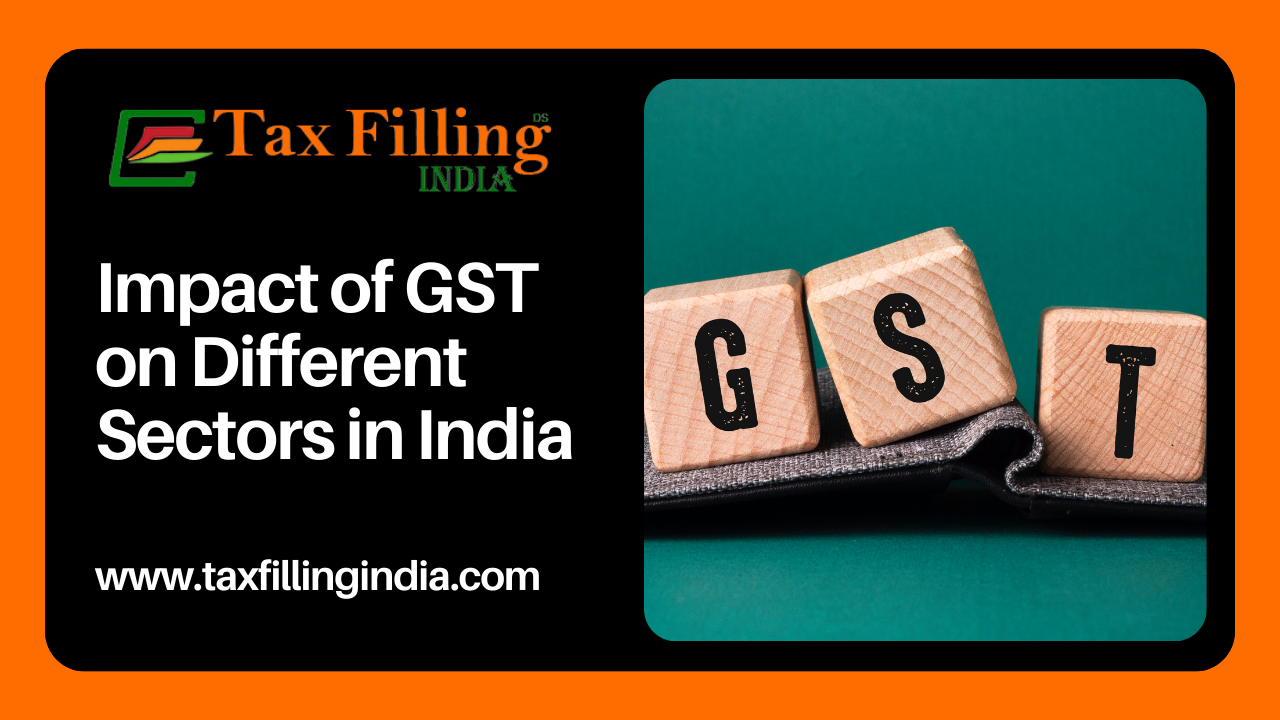Impact of GST on Different Sectors in India

The implementation of GST in India has had a significant impact on various sectors across the country. Let's explore the impact of GST on different sectors:
- Manufacturing Sector: GST has streamlined the taxation system for manufacturers by replacing multiple indirect taxes. It has eliminated the cascading effect of taxes and allowed for the seamless flow of input tax credit, reducing the overall tax burden. This has led to increased efficiency, cost savings, and competitiveness in the manufacturing sector.
- E-commerce Sector: GST has brought about a significant change in the e-commerce industry. It has simplified tax compliance for e-commerce operators and brought them under a common tax framework. The introduction of the e-way bill has streamlined the movement of goods, ensuring better control and accountability. However, compliance challenges and changes in tax collection mechanisms have impacted some small-scale e-commerce sellers.
- Service Sector: GST has had a mixed impact on the service sector. While the overall tax liability has increased for some services due to higher tax rates (e.g., telecommunications, banking, insurance), the availability of input tax credit has balanced the impact for many service providers. Some services, such as healthcare and education, may have been subject to additional compliance requirements and increased costs.
- Retail Sector: The retail sector has experienced both positive and negative impacts of GST. While organized retailers have benefited from the simplification of the taxation system and the availability of input tax credit, small retailers have faced challenges adapting to the new compliance requirements. Additionally, the reduction in tax rates on certain products has positively influenced consumer demand and purchasing power.
- Real Estate Sector: GST has brought about significant changes in the real estate sector. The introduction of GST has replaced multiple taxes like VAT, service tax, and stamp duty. However, the real estate sector is subject to a complex tax structure, with some properties falling under the purview of both GST and stamp duty. The impact on property prices and the input tax credit availability has varied across different states.
- Automobile Sector: GST has resulted in a mixed impact on the automobile sector. While the tax rates on some vehicles have increased, there has been a reduction in taxes on certain components and spare parts. The availability of input tax credit has positively impacted the sector by reducing costs and promoting efficiency. However, challenges related to the classification of vehicles and compliance requirements have been observed.
- Export and Import Sector: GST has simplified export and import procedures by providing input tax credit on exports and creating a single tax structure for goods and services. The introduction of Integrated Goods and Services Tax (IGST) has eliminated cascading taxes on imports and improved the competitiveness of Indian goods in international markets.
- Agri-based Sector: While agricultural produce is generally exempt from GST, some agricultural inputs like fertilizers, pesticides, and machinery are subject to GST. The availability of input tax credit on such inputs has positively impacted the agri-based sector by reducing costs. However, the sector faces challenges related to compliance and documentation requirements.
In conclusion, the impact of GST on different sectors in India varies. While GST has brought about positive changes like simplification of tax procedures, input tax credit availability, and cost savings for several sectors, there are also challenges in terms of compliance, classification, and changes in the tax structure. Overall, GST aims to create a unified tax structure, promote ease of doing business, and enhance competitiveness across sectors, though the impacts may differ in magnitude and nature for each sector.
Comments
Post a Comment